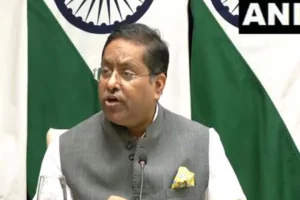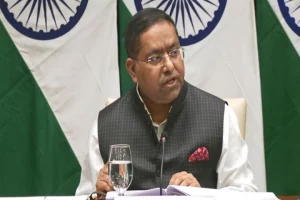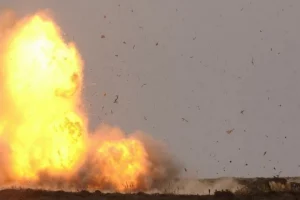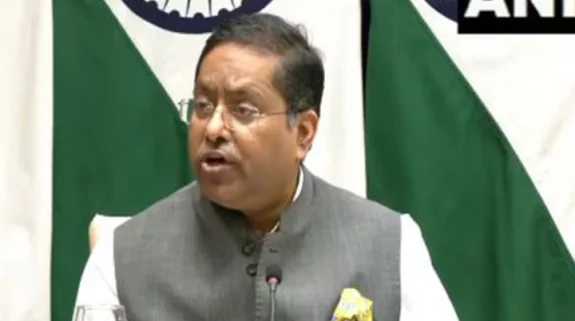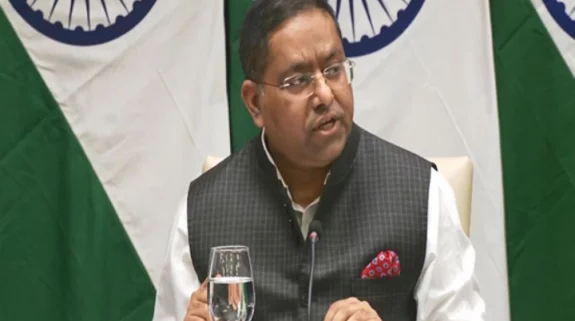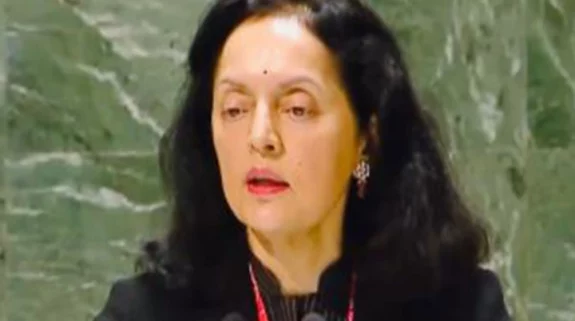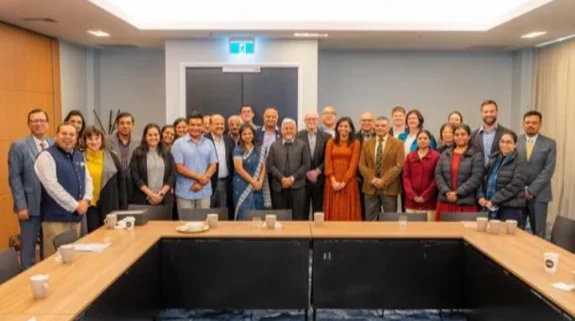China sees rising India as a strategic rival and wants to contain it by asserting its economic dominance and discouraging New Delhi from bonding with the United States, Japan and Australia, reveals a new US State Department document. Titled 'The Elements of the China Challenge', the 'unclassified Policy Planning Staff paper' released by the US State Department's Office of Policy Planning details the Chinese Communist Party's quest for global preeminence and the Xi Jinping regime's aim to fundamentally revise the world order by placing at the center Beijing's authoritarian goals and hegemonic ambitions.
It follows the publication of ‘Trump on China: Putting America First – a collection of speeches laying out the most significant United States foreign policy shift in a generation,’ released by the White House earlier this month and asserts further the Donald Trump Administration's call for developing a new "strategic doctrine" to "address the primacy and magnitude" of the China challenge.
"After World War II, the United States helped to develop the Indo-Pacific's free and open order. The People’s Republic of China (PRC) seeks to diminish U.S. influence by fostering a sense in the region's nations that China's dominance is inevitable. Prime targets include U.S. treaty-based allies — Japan, South Korea, Australia, Thailand, and the Philippines — as well as emerging strategic partners such as India, Vietnam, Indonesia, and Taiwan. The PRC is also undermining the security, autonomy, and economic interests of many others in the region — such as member states of the Association of Southeast Asian Nations (ASEAN), including those in the vital Mekong Region, as well as the nations of the Pacific Islands," states the 74-page document.
<strong>Read also | <a href="https://indianarrative.com/world/shakib-apology-why-india-should-be-worried-with-bangladeshs-surrender-to-radical-islamists-24913.html" target="_blank" rel="noopener noreferrer">Shakib apology: The Jihadi tide in Bangladesh and why India should be worried</a></strong>
Created in 1947 by George Kennan at the request of then Secretary of State George C. Marshall, the Policy Planning Staff serves as a source of independent policy analysis and advice for the US Secretary of State. The Policy Planning Staff's mission is to take a longer term, strategic view of global trends and frame recommendations for the Secretary of State to advance U.S. interests and American values.
The document explains that China, modeled on 20th-century Marxist-Leninist dictatorship, remains a huge challenge because of its conduct – the standoff in Ladkah provoked by the People's Liberation Army (PLA), which owes allegiance to the CCP, being a prime example.
<img class="wp-image-25637 size-large" src="https://indianarrative.com/wp-content/uploads/2020/11/CHINA-LADAKH-1024×754.jpg" alt="CHINA LADAKH" width="525" height="387" /> A protest rally against China after the PLA attack on Indian Army in Ladakh's Galwan Valley, earlier this year. China sees rising India as a strategic rival and wants to contain it by asserting its economic dominance and discouraging New Delhi from bonding with the United States, Japan and Australia, reveals a new US State Department document (IANS)"China supplements economic power in the Indo-Pacific with demonstrations of military capability. The PLA Air Force regularly conducts long-range bomber patrols out to the second island chain (stretching from Japan through the Mariana Islands and Micronesia) while the PLA Navy operates surface and sub-surface naval forces from Southeast Asia to the Indian Ocean, and challenges naval and law enforcement vessels in the South China Sea and East China Sea. The PLA recently provoked skirmishes along its disputed border with India, which killed dozens on both sides, and remains in a tense standoff with India's military. Beijing menaces democratic Taiwan, which it considers a renegade province, intending to reunify Taiwan with the Mainland — by force if necessary. And the PLA Navy and Chinese Coast Guard increasingly challenge Japan’s administrative control of the Senkaku Islands," the paper mentions.
<strong>Read also | <a href="https://indianarrative.com/world/tlp-protest-rally-in-islamabad-targets-french-embassy-24310.html" target="_blank" rel="noopener noreferrer">Pakistanis peddling lies, throwing in red herrings, hurling false charges at India</a></strong>
To tackle the China challenge, the US State Department has listed 10 tasks to refashion its foreign policy which also includes strengthening of its alliance system by more effectively sharing responsibilities with friends and partners and by forming a variety of groupings and coalitions to address specific threats to freedom while, in cooperation with the world's democracies and other like-minded partners.
The US Secretary of State Mike Pompeo, had in his now-famous July 23 speech at the Richard Nixon Presidential Library, called for "a new grouping of like-minded nations — a new alliance of democracies" which was also put into action with the Quadrilateral Security Dialogue and coming together of the Quad in the seas.
"To understand China's peculiar form of authoritarianism and the hegemonic goals to which it gives rise, it is necessary to grasp the intellectual sources from which China's conduct springs: the CCP's Marxist-Leninist beliefs and the party's extreme interpretation of Chinese nationalism," the document says.
It adds that notwithstanding its authoritarian rule over PRC citizens and the threat it presents to freedom around the world, China under the CCP is marked by a variety of vulnerabilities.
"These begin with the disadvantages endemic to autocracy: constraints on innovation, difficulties forming and maintaining alliances, and costs arising from internal repression. They also include vulnerabilities specific to the PRC: economic instability; demographic imbalance; environmental degradation; persistent corruption; oppression of ethnic and religious minorities; daunting expenses incurred in monitoring, censoring, and indoctrinating 1.4 billion people in China; separation of the military, which is controlled by the party, from the people; and — particularly in the wake of the illness, death, and social and economic devastation wrought worldwide by the Covid-19 pandemic born in Wuhan — mounting international anger at the CCP's contempt for human life, indifference to other nations' well-being, and disregard for international norms and obligations."
From placing more satellites in space than any country other than the United States to using the Belt and Road Initiative (BRI) and other undertakings to expand foreign markets for Chinese companies – and as a means of drawing nations, particularly their political and economic elites, into Beijing's geopolitical orbit – China, says the paper, is doing everything to advance its objectives.
"In South and Central Asia, the PRC invests heavily in transportation infrastructure to expand trade routes to Eurasia and Europe and to secure the flow of energy, raw materials, and other resources. The China-Pakistan Economic Corridor (CPEC) serves as the Belt and Road Initiative's Central Asia flagship. CPEC also connects to the BRI's "21st Century Maritime Silk Road," greatly enhancing China's access to the Middle East through Pakistan's Gwadar port and linking to PRC projects at Sri Lanka's Hambantota port, Bangladesh's Chittagong port, and the Maldives's Feydhoo Finolhu Port."
The State Department believes that the China challenge resembles the one presented by the Soviet Union to the free world even though China primarily pursues the reconfiguration of world affairs through a kind and quantity of economic power of which the Soviets could only have dreamed.
"Soviet authoritarianism combined communism and traditional Russian nationalism. The Soviet synthesis governed the USSR's quest to construct a worldwide socialist order with Moscow at the center. Similarly, Chinese authoritarianism combines communism and a hyper-nationalist interpretation of China’s status and destiny. The CCP synthesis governs China’s quest to construct a worldwide socialist order with Beijing at the center.".









